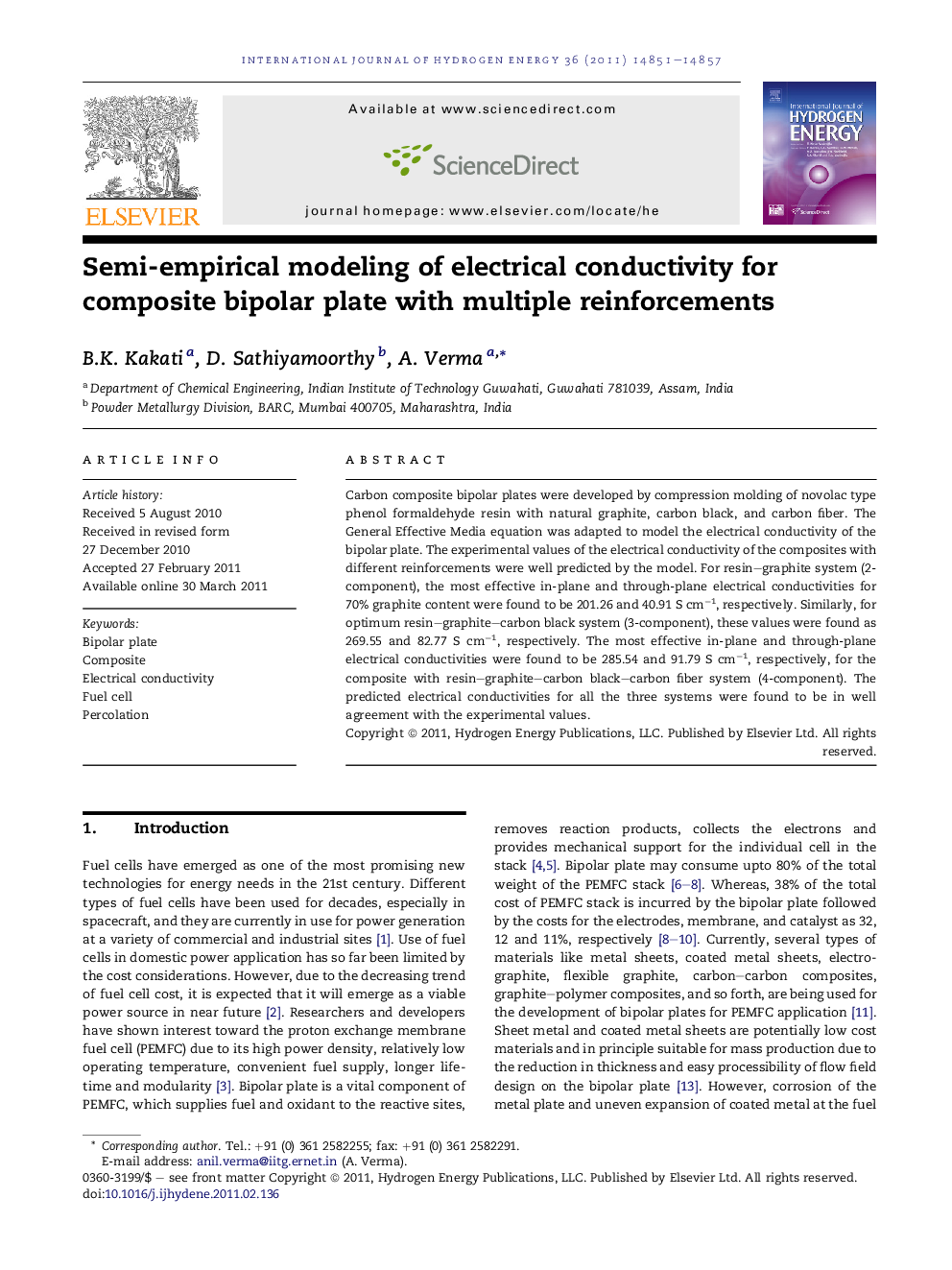| Article ID | Journal | Published Year | Pages | File Type |
|---|---|---|---|---|
| 1275694 | International Journal of Hydrogen Energy | 2011 | 7 Pages |
Carbon composite bipolar plates were developed by compression molding of novolac type phenol formaldehyde resin with natural graphite, carbon black, and carbon fiber. The General Effective Media equation was adapted to model the electrical conductivity of the bipolar plate. The experimental values of the electrical conductivity of the composites with different reinforcements were well predicted by the model. For resin–graphite system (2-component), the most effective in-plane and through-plane electrical conductivities for 70% graphite content were found to be 201.26 and 40.91 S cm−1, respectively. Similarly, for optimum resin–graphite–carbon black system (3-component), these values were found as 269.55 and 82.77 S cm−1, respectively. The most effective in-plane and through-plane electrical conductivities were found to be 285.54 and 91.79 S cm−1, respectively, for the composite with resin–graphite–carbon black–carbon fiber system (4-component). The predicted electrical conductivities for all the three systems were found to be in well agreement with the experimental values.
